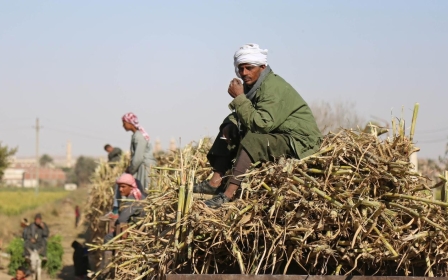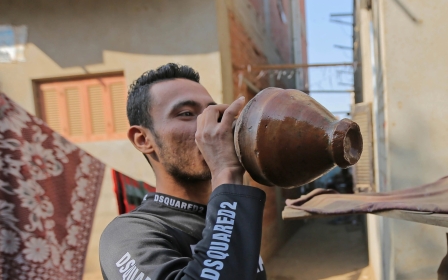
In pictures: The making of jallab sweets in Upper Egypt
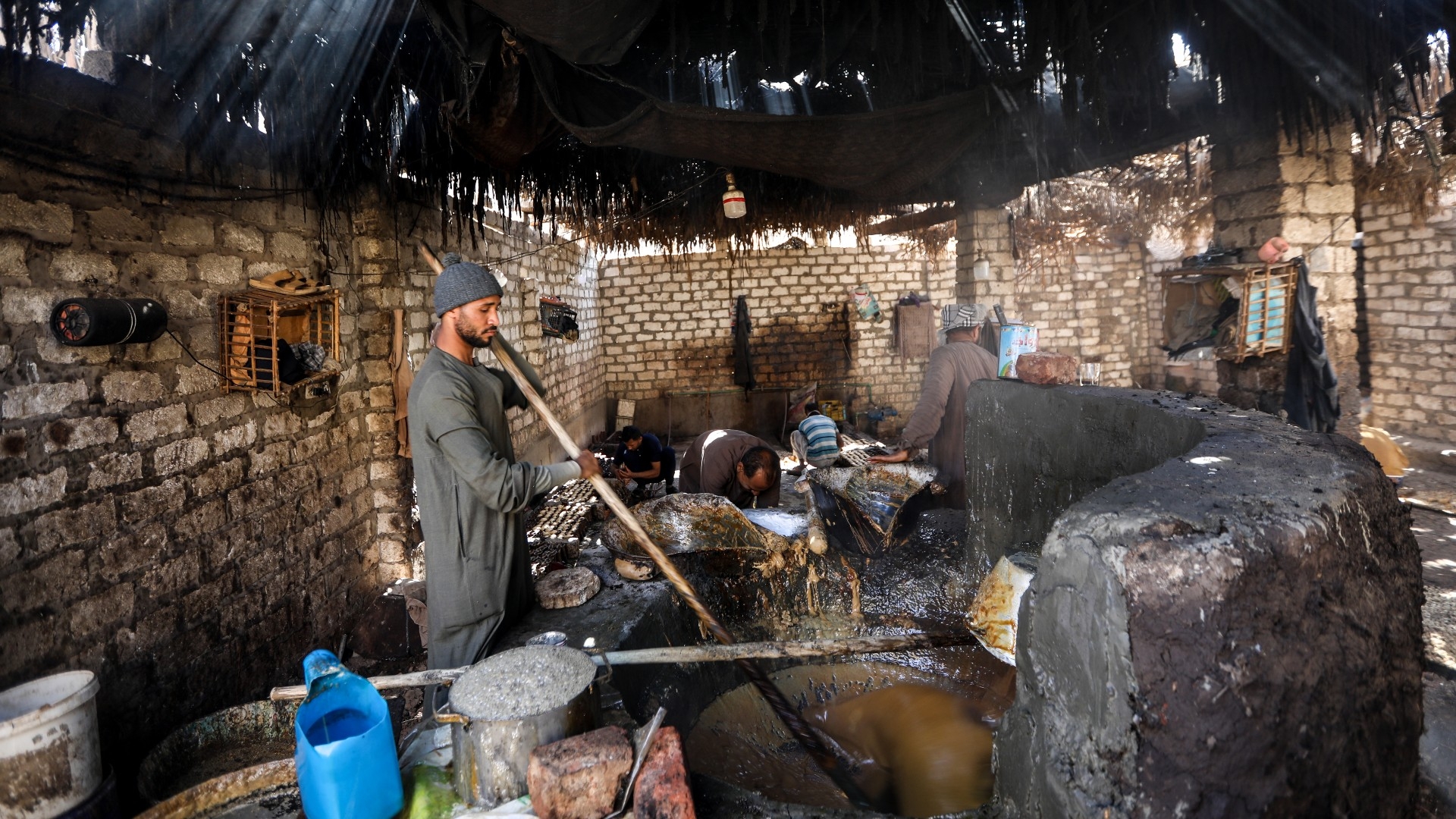
In the Qena governorate of Upper Egypt, locals can buy ready-to-eat jallab in shops and markets. The sweet is a light brown colour, resembling the wafer of an ice-cream cone. Unlike the beverage that shares its name in other parts of the Middle East, the sweet is made from a syrup extracted exclusively from sugarcane. The syrup is not refined to the point where it becomes molasses, but instead is boiled until it thickens. (All photos by Fadel Dawod)
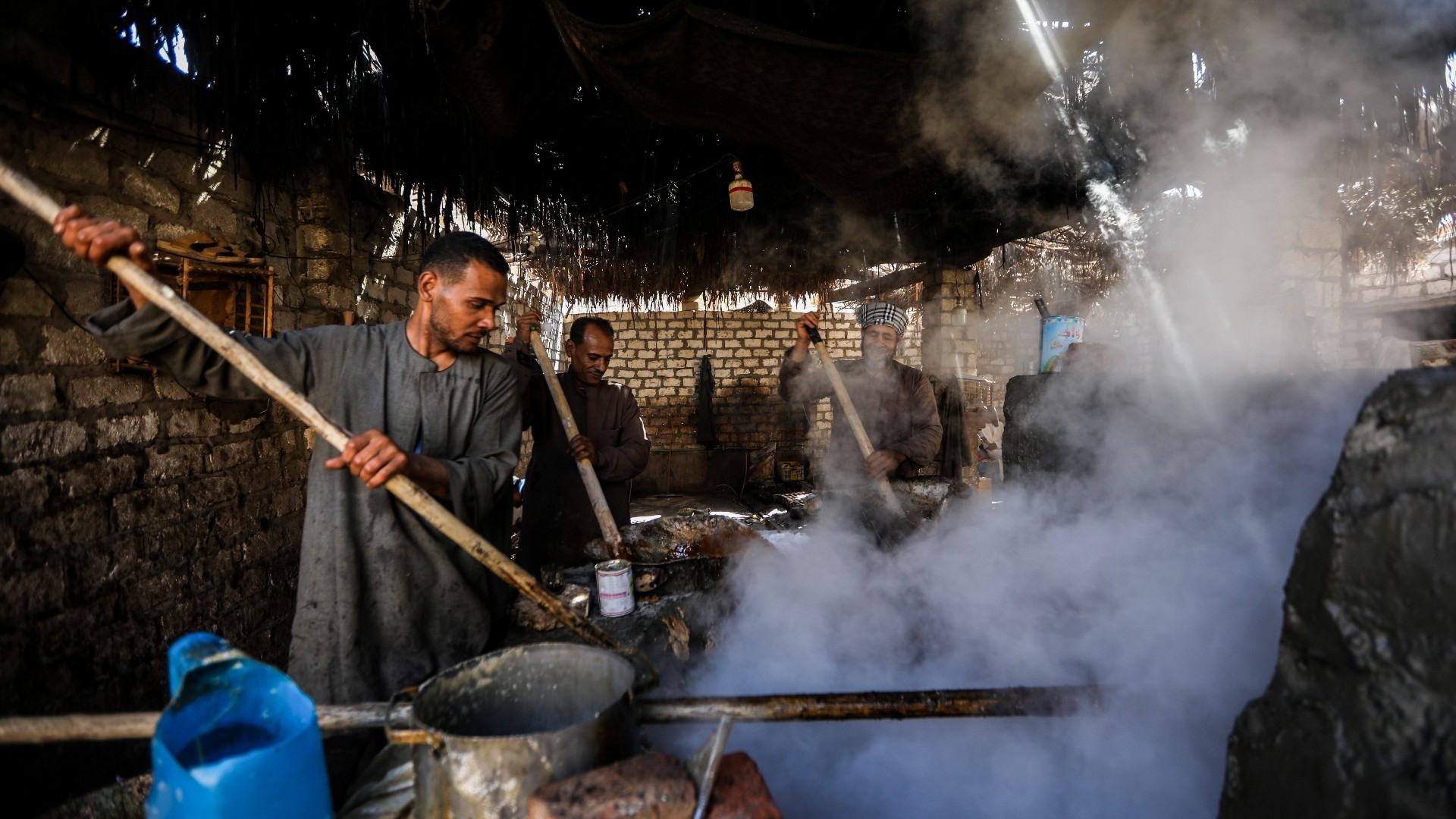
The jallab industry has a long association with Qena, north of Luxor, with locals taking it with them as gifts when visiting other parts of Egypt. The sweet, which has a smooth but hard texture, is not overly sugary and is unique to Upper Egypt due to the popularity of the sugarcane industry there.
Upper Egypt is home to around 77 percent of the country’s sugarcane fields, making it common to find sugar cane juice, jallab sweets and sugarcane molasses in local markets. The sweet can also be found on sale at local juice stands.

The factories in which jallab is produced are small brick buildings with straw ceilings. That composition allows sunlight to pour in from between the leaves and stems of the straws, offering shade for the workers. Inside, men hunch over large pots stirring. The sweet is still made by hand, as it has been for centuries, and does not use any modern machinery.
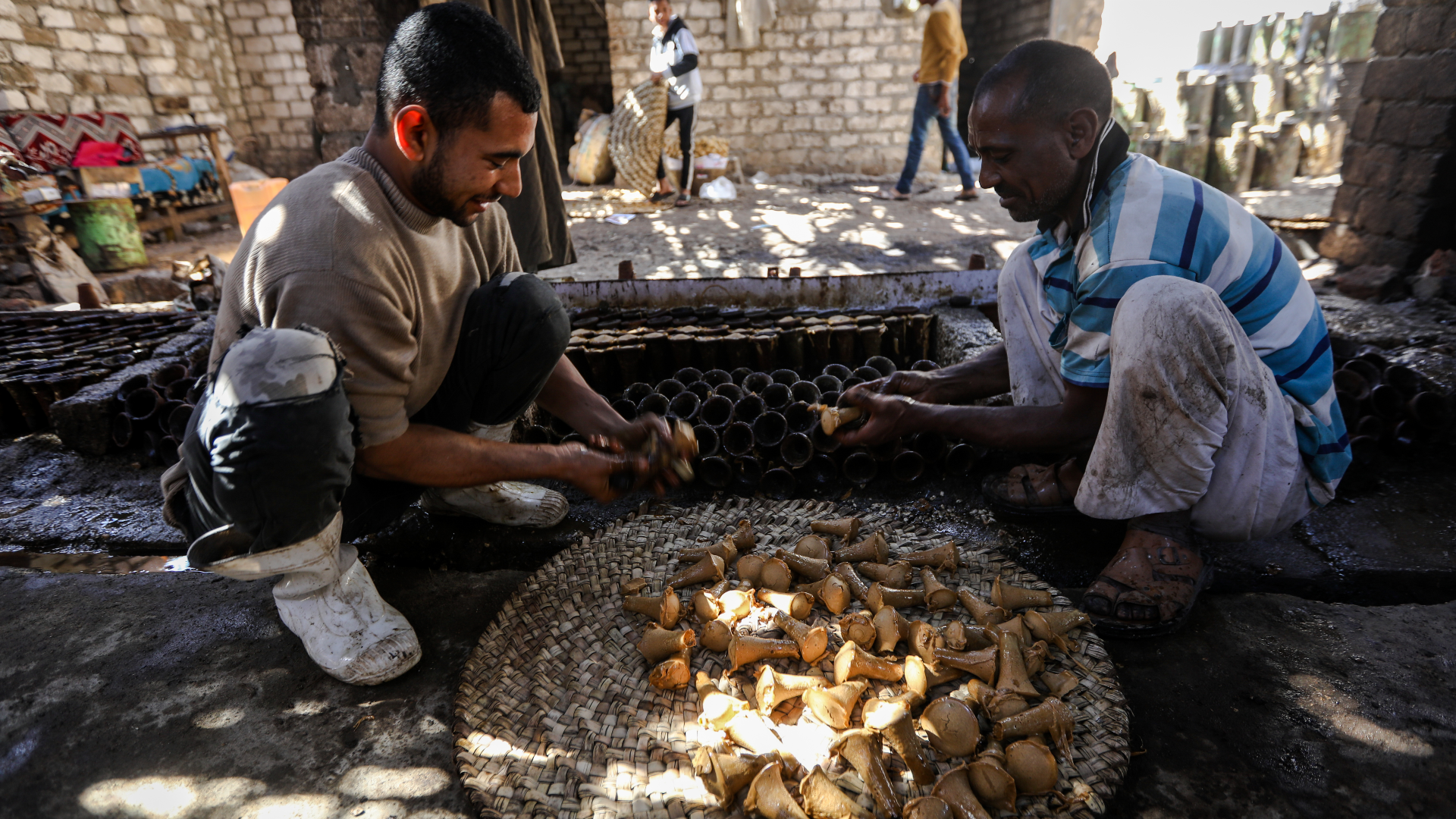
It is typical to find the majority of people in a given village in Qena working on jallab production. Mohamed Yunus, a 48-year-old working in one of the region's factories, has been doing the job since he was in primary school. "I learnt how to do this job from a young age. My older brother taught me how...but anyone can learn it in around three to four years," he told Middle East Eye.
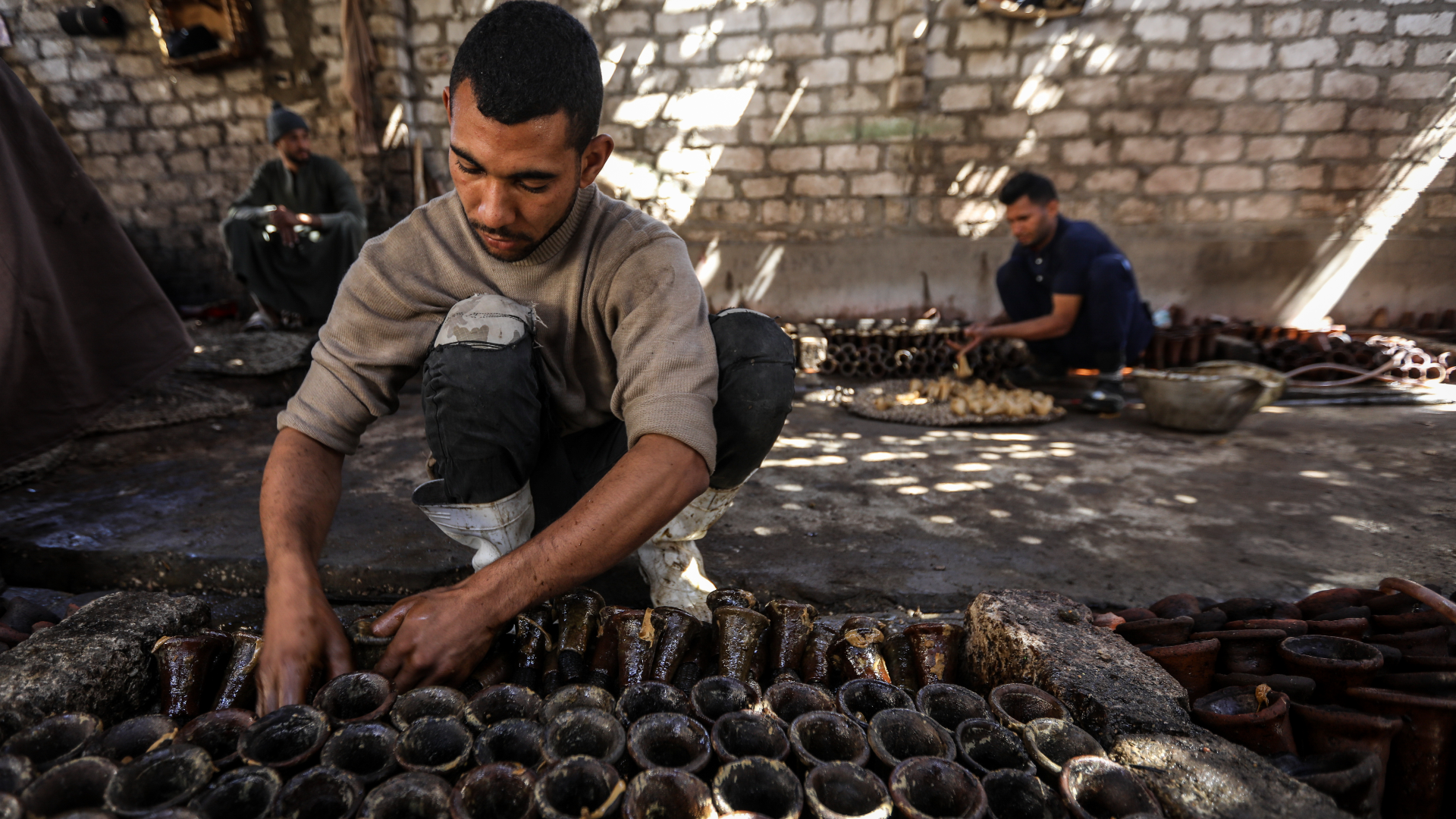
To make the sweet, first the syrup is collected and stored. According to workers at the factory, the liquid is then purified by boiling it for around 15 minutes, while being continuously stirred with a wooden stick. The syrup is then placed in a copper pan and left to boil again at a high temperature until it becomes completely liquidised, with sodium carbonate added to it. The mixture then takes on its harder texture when it cools.
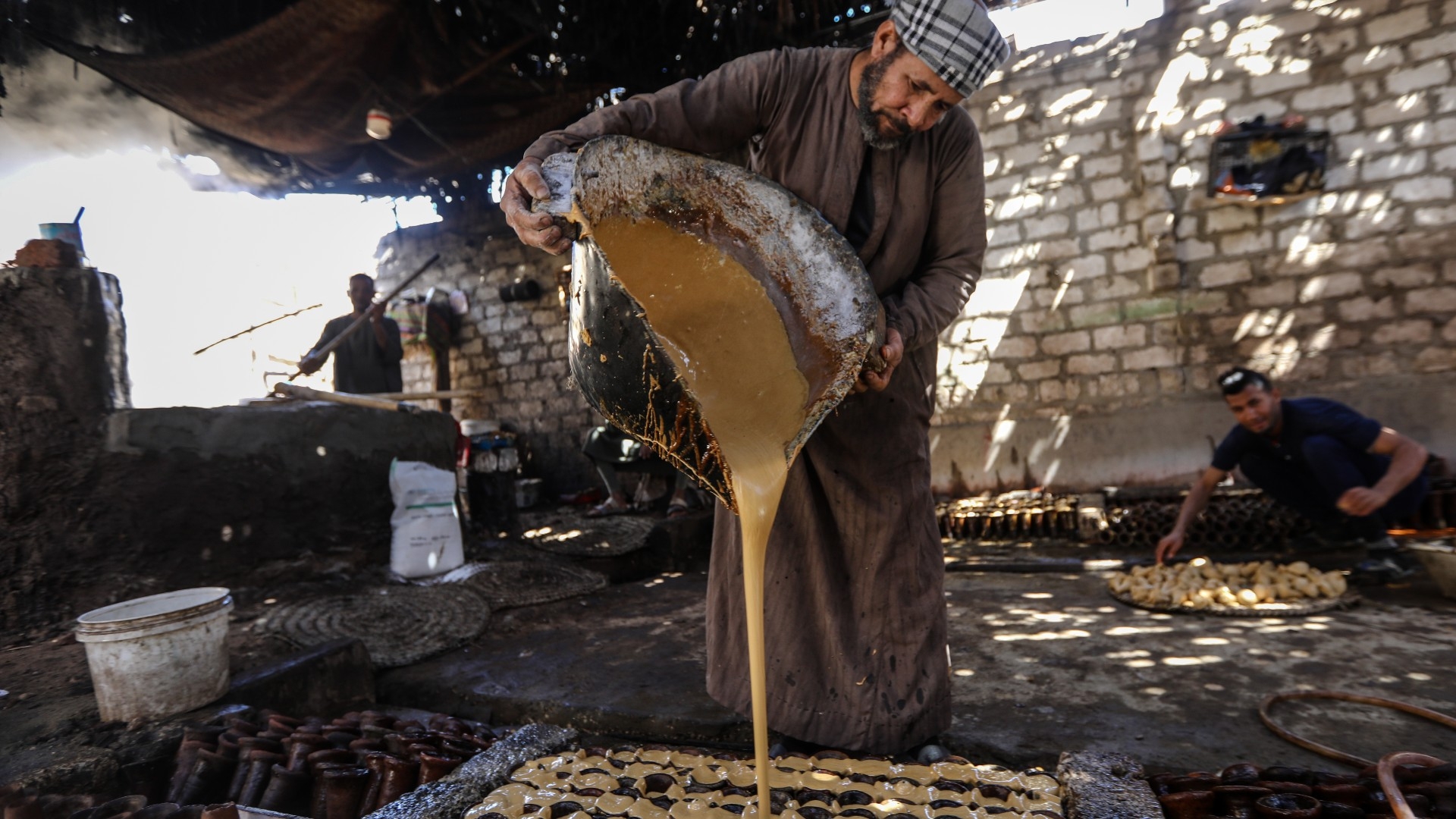
Once the sweet has thickened enough, it is removed from the pan, moulded and placed in trays that are placed out in the sun; this causes the sweet to harden even more. The end product is then packaged and is ready to be sold.
The cost of jallab has gone up in recent years as heating the syrup became more expensive, but those in the industry are not worried, as both the production and consumption of jallab is a key part of the region's heritage.
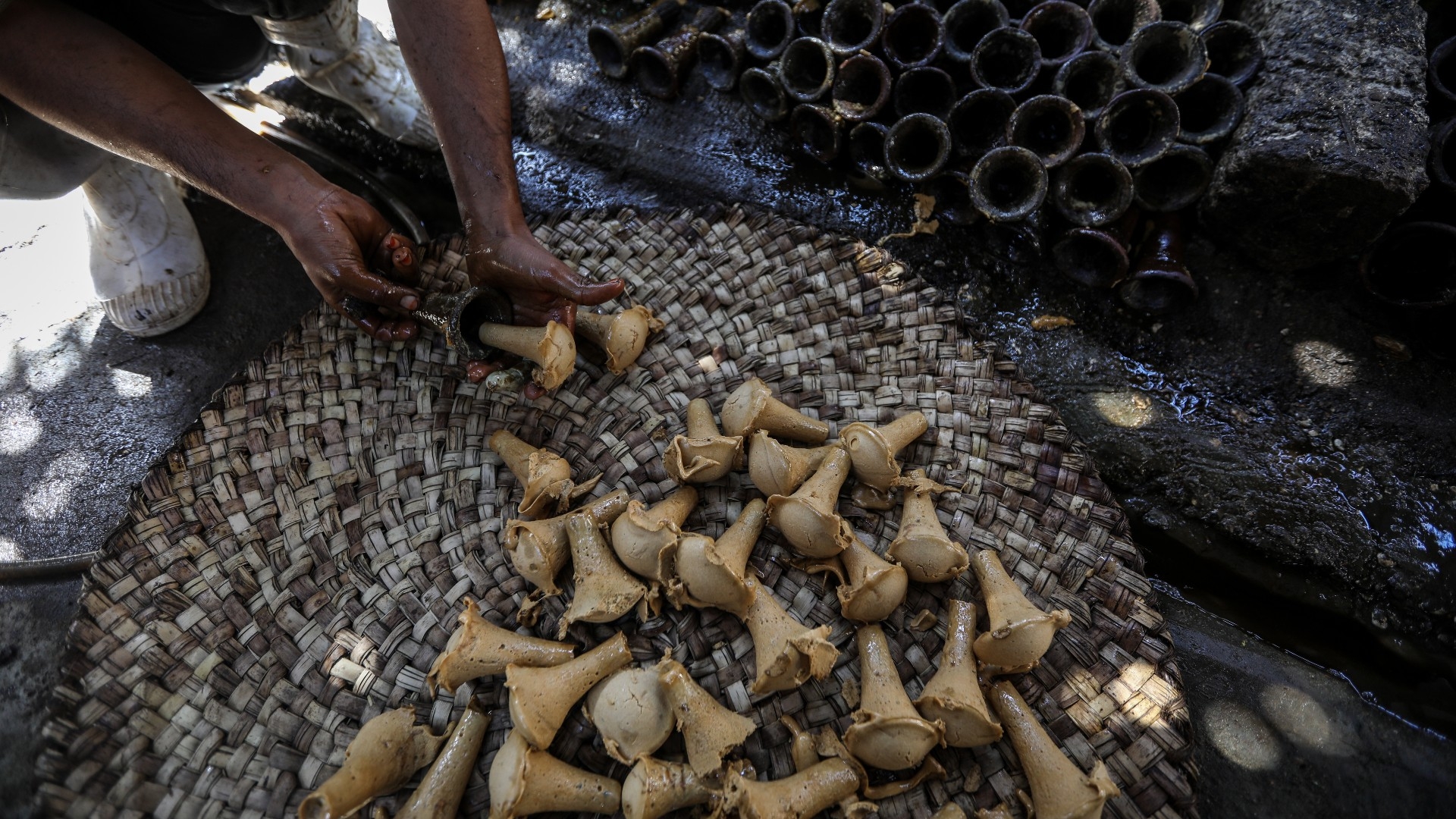
For workers like Yunus, producing jallab is a family tradition passed down over generations: "It's an old industry that we cherish as it was passed down from our ancestors," he explained, adding: "It's also important because the people here love sweets, children also love them because it's the same sweets that their grandparents once enjoyed," he added.
A factory will typically employ around 15 people, each starting their shift early in the morning and working through to the evening. Every task requires a certain finesse and skill which is acquired over several years. For example, those responsible for cooling and moulding the jallab must do so in a way that ensures the individual pieces are uniform in shape.

Teenagers who are learning the trade often shadow older workers in the factory in order to learn proper technique and are given auxiliary roles within the factory. While the temptation to bring in modern manufacturing methods to jallab production is an ever-present thought for factory owners, there is a sense of authenticity that comes with the handmade version of the sweet.
Middle East Eye delivers independent and unrivalled coverage and analysis of the Middle East, North Africa and beyond. To learn more about republishing this content and the associated fees, please fill out this form. More about MEE can be found here.


